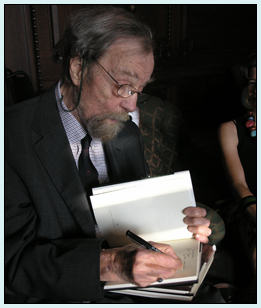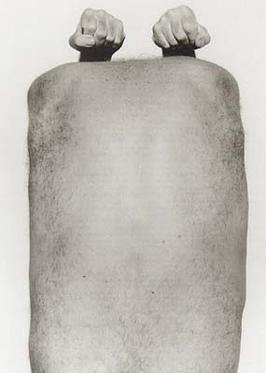Related Research Articles

Donald Andrew Hall Jr. was an American poet, writer, editor, and literary critic. He was the author of over 50 books across several genres from children's literature, biography, memoir, essays, and including 22 volumes of verse. Hall was a graduate of Phillips Exeter Academy, Harvard, and Oxford. Early in his career, he became the first poetry editor of The Paris Review (1953–1961), the quarterly literary journal, and was noted for interviewing poets and other authors on their craft.
Rosalind Epstein Krauss is an American art critic, art theorist and a professor at Columbia University in New York City. Krauss is known for her scholarship in 20th-century painting, sculpture and photography. As a critic and theorist she has published steadily since 1965 in Artforum,Art International and Art in America. She was associate editor of Artforum from 1971 to 1974 and has been editor of October, a journal of contemporary arts criticism and theory that she co-founded in 1976.
Gilles Peress is a French photographer and a member of Magnum Photos.

John Rivers Coplans was a British artist, art writer, curator, and museum director. A veteran of World War II and a photographer, he emigrated to the United States in 1960 and had many exhibitions in Europe and North America. He was on the founding editorial staff of Artforum from 1962 to 1971, and was Editor-in-Chief from 1972 to 1977.

Phillip Lopate is an American film critic, essayist, fiction writer, poet, and teacher.

Stephen Shore is an American photographer known for his images of scenes and objects of the banal, and for his pioneering use of color in art photography. His books include Uncommon Places (1982) and American Surfaces (1999), photographs that he took on cross-country road trips in the 1970s.
Ralph Gibson is an American art photographer best known for his photographic books. His images often incorporate fragments with erotic and mysterious undertones, building narrative meaning through contextualization and surreal juxtaposition.
Peter Orner is an American writer. He is the author of two novels, two story collections and a book of essays. Orner holds the Professorship of English and Creative Writing at Dartmouth College and was formerly a professor of creative writing at San Francisco State University. He spent 2016 and 2017 on a Fulbright in Namibia teaching at the University of Namibia.
Frederick Robert Karl (1927–2004) was a literary biographer, best known for his work on Joseph Conrad, a literary critic, and an editor. He spent 25 years teaching at City College of New York and then followed with 18 years at New York University.
John Douglas Crimp was an American art historian, critic, curator, and AIDS activist. He was known for his scholarly contributions to the fields of postmodern theories and art, institutional critique, dance, film, queer theory, and feminist theory. His writings are marked by a conviction to merge the often disjunctive worlds of politics, art, and academia. From 1977 to 1990, he was the managing editor of the journal October. Before his death, Crimp was Fanny Knapp Allen Professor of Art History and professor of Visual and Cultural Studies at the University of Rochester.

Allan Douglass Coleman is an independent American critic, historian, educator, and curator of photography and photo-based art, and a widely published commentator on new digital technologies. He has published eight books and more than 2000 essays on photography and related subjects. He has lectured and taught internationally; his work has been translated into 21 languages and published in 31 countries.

Mira Schor is an American artist, writer, editor, and educator, known for her contributions to critical discourse on the status of painting in contemporary art and culture as well as to feminist art history and criticism.
Laurence Bruce Fink was an American photographer and educator, best known for his black-and-white images of people at parties and in other social situations.

Joyce Kozloff is an American artist known for her paintings, murals, and public art installations. She was one of the original members of the Pattern and Decoration movement and an early artist in the 1970s feminist art movement, including as a founding member of the Heresies collective.

Peter Plagens is an American artist, art critic, and novelist based in New York City. He is most widely known for his longstanding contributions to Artforum and Newsweek, and for what critics have called a remarkably consistent, five-decade-long body of abstract formalist painting. Plagens has written three books on art, Bruce Nauman: The True Artist (2014), Moonlight Blues: An Artist's Art Criticism (1986) and Sunshine Muse: Modern Art on the West Coast, 1945-70 (1974), and two novels, The Art Critic (2008) and Time for Robo (1999). He has been awarded major fellowships for both his painting and his writing. Plagens's work has been featured in surveys at the Museum of Modern Art, Los Angeles County Museum of Art (LACMA), Whitney Museum, and PS1, and in solo exhibitions at the Hirshhorn Museum and Las Vegas Art Museum. In 2004, the USC Fisher Gallery organized and held a 30-year traveling retrospective of his work. Critics have contrasted the purely visual dialogue his art creates—often generating more questions than answers—with the directness of his writing; they also contend that the visibility of his bylines as a critic has sometimes overshadowed his artmaking—unduly. Los Angeles Times critic David Pagel described Plagens's painting as a "fusion of high-flying refinement and everyday awkwardness" with an intellectual savvy, disdain for snobbery and ungainliness he likened to Willem de Kooning's work. Reviewing Plagens's 2018 exhibition, New York Times critic Roberta Smith called the show an "eye-teasing sandwich of contrasting formalist strategies," the hard-won result of a decade of focused experimentation.

David Levi Strauss is an American poet, essayist, art and cultural critic, and educator. He is the author of a book of poetry, four books of essays, and numerous monographs and catalogues on artists. He was Chair of the graduate program in Art Writing at the School of Visual Arts in New York City from 2007 until that program closed in 2021. He also taught at the Center for Curatorial Studies at Bard College from 2001–2005, and since 2002 he has continued to teach in the Milton Avery Graduate School of the Arts at Bard.

LaToya Ruby Frazier is an American artist and professor of photography at the School of the Art Institute of Chicago.
Mary Lum is an American visual artist whose paintings, collages and works on paper reference the urban environment, architectural forms and systems. Critic John Yau writes, "Mary Lum’s paintings on paper are based on collages, which are made from things she uses or encounters in her everyday life as well as photographs she takes of the places she visits. "

Sidney Tillim was an American artist and art critic, known for his maverick painting and independent point of view on modern art in post-war America. Best remembered for his revival of history painting in the 1970s, Tillim alternated between the figurative and the abstract throughout his career. Likewise, although he wrote on a wide range of topics for Artforum and Arts Magazine, he is most identified with supporting representational art when few did.

Craig Drennen is an American artist based in Atlanta, Georgia. He is best known for his ongoing long-term Timon of Athens project, for which he has produced paintings, drawings, prints, videos, performances, sculptures. His work shows technical agility across a wide range of influences that spans abstraction, representation, and conceptual practices. In a catalog essay, the curator Diana Nawi writes that Drennen's "…multifaceted, dense, and ambitious practice suggests a world of meaning defined by symbols that emerge in different media and coalesce across projects."
References
- ↑ "Max Kozloff - Artists - Steven Kasher Gallery". www.stevenkasher.com. Retrieved 2023-07-25.
- 1 2 Lane, Guy (17 November 2007). "Picture perfect Max Kozloff charts the development of photographic portraiture in his astute study, The Theatre of the Face". The Guardian. London.
- 1 2 "John Simon Guggenheim Foundation" . Retrieved 2021-07-25.
- 1 2 "Infinity Awards > Past Recipients 1985–1995". International Center of Photography website. Archived from the original on 2007-09-04.
- ↑ "Awards". The College Art Association. Retrieved 11 October 2010.
- ↑ "Joyce Kozloff". Jewish Women's Archive. Retrieved 2021-07-25.
- ↑ "Writers and Editors War Tax Protest" January 30, 1968 New York Post